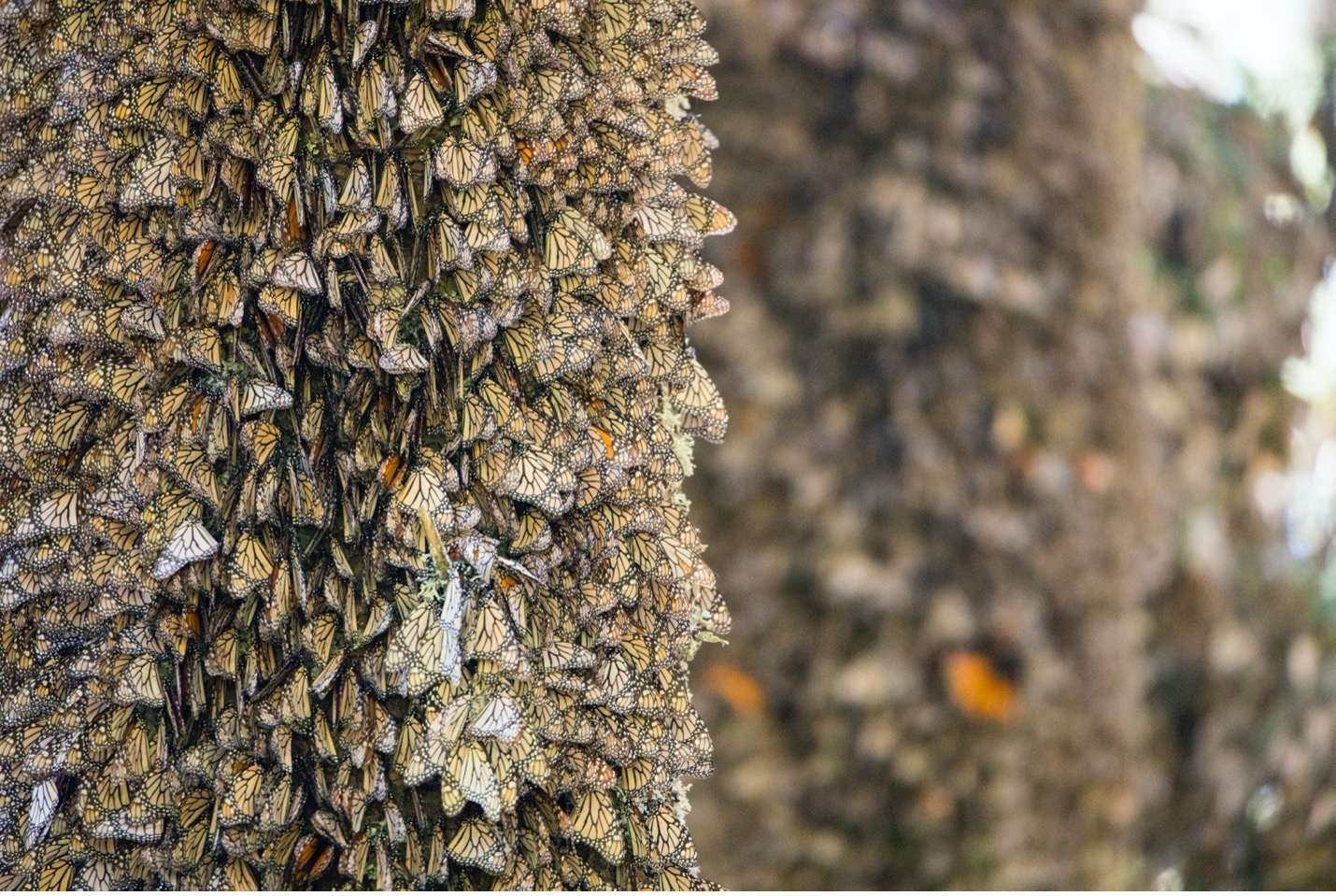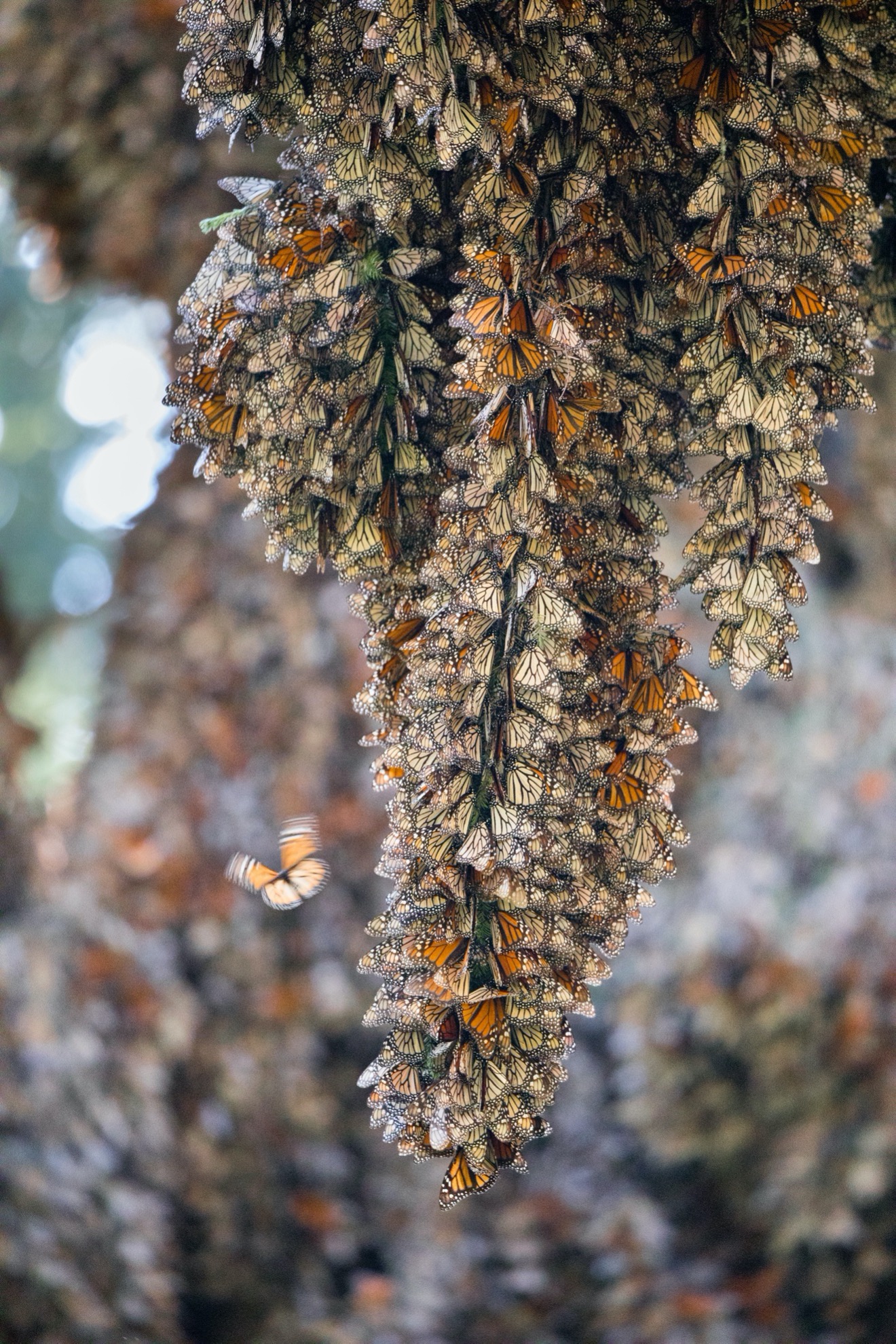
The Best Lens for Photographing the Monarch Butterfly Migration
If you’ve followed my writing and photography for a little while now, you’ll know I’m wild for photographing the monarch butterfly and its amazing migration. It’s truly one of mother nature’s most spectacular phenomena. However, capturing it is actually not as easy as you’d think. It’s actually quite challenging to match the brilliance and exuberance you see with what you produce in your camera.
But there is one lens that I feel helps indeed bring out the magic of the monarch migration, and it’s probably not the lens you’d think.

While you may be thinking a wide angle or even ultra-wide angle is what’s needed to best capture the monarchs in their overwintering colonies, it’s actually a good zoom telephoto that I find is the best. I stick with a trusty 100-400mm as my go-to, and wouldn’t hesitate to recommend a 200-500mm super telephoto if you have one.
What makes this lens so fantastic is of course the reach it gives you. But why do you want and need the reach?

Because some of the best photographs of the butterflies aren’t right in front of you. In fact, the real art with photographing monarchs comes in the form of the search for that one interesting cluster of butterflies that may be backlit against a blue sky. Or, the side of a distant tree trunk that has perfectly even lighting with monarchs deeply layered.

While these somewhat distant scenes aren’t really what make the experience of watching the butterflies so magical, as you have much closer, brilliant scenes, it does take some work to find the best photos.
This is primarily because the lighting inside these colonies can be very harsh. With sunny weather and tall canopy trees, you have wildly mottled lighting such that nearly everything you see is a mosaic of dark shadows and bright highlights. The zoom telephoto allows you to pick out specific areas within the colonies of butterflies that are either all in the shade, or all in the sun, and exhibit some unique feature like a pattern, shape or behavior of the butterflies.
As you can see below, a layering effect is fantastic for monarch photography. Having the butterflies in the foreground with a distant background adds a lovely blur and “layered effect” to the photo.

Now, just because my trusty telephoto is my go-to lens each day doesn’t mean I don’t pack a good wide angle, too. That’s also an important part of your kit. However, if I had to choose just one, it’s telephoto each and every time. It’s also a great lens for filling-the-frame shots of individual butterflies, which is of course a big part of the experience, too!

I hope you’re reading this in preparation for a monarch butterfly photo adventure, because that means you are in for a real treat. And who knows…I might see you out there! Just be sure to take along your zoom telephoto and you’ll come home with a litany of impressive photos that are sure to be an integral part of your wildlife photo portfolio.
Cheers, and be well!

Court
2 Comments

Amanda Dams
February 10, 2023 at 11:22 pm

Court Whelan, Ph.D.
February 13, 2023 at 8:25 am
Wow, amazing shots of these butterflies migration, I never saw anything like this! It couldn’t get any better with the perfect lens. Congrats
thanks, Amanda!